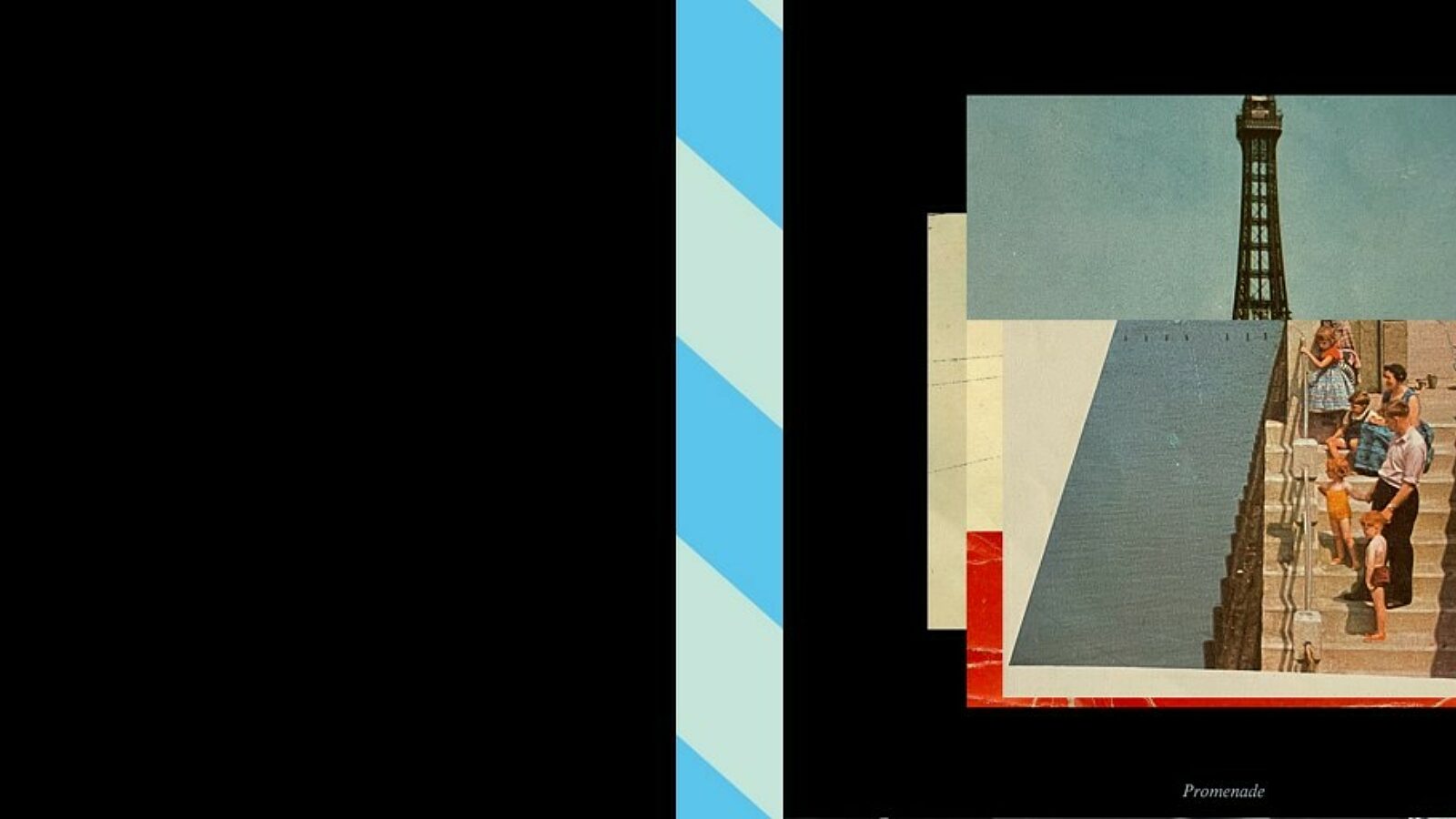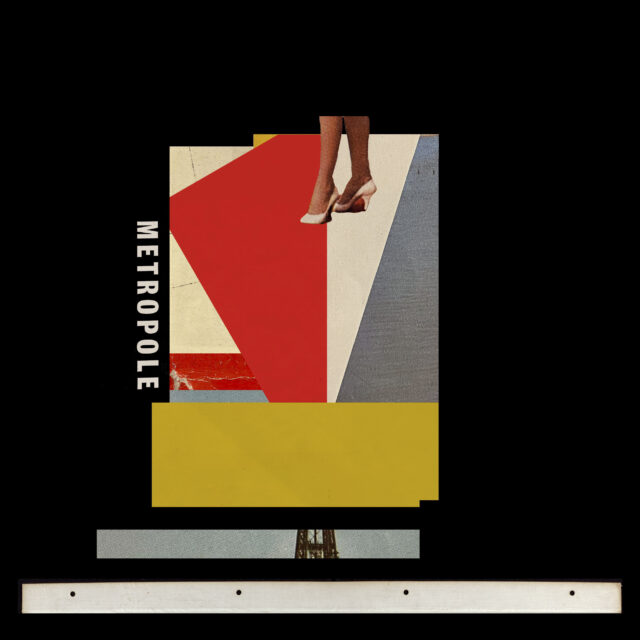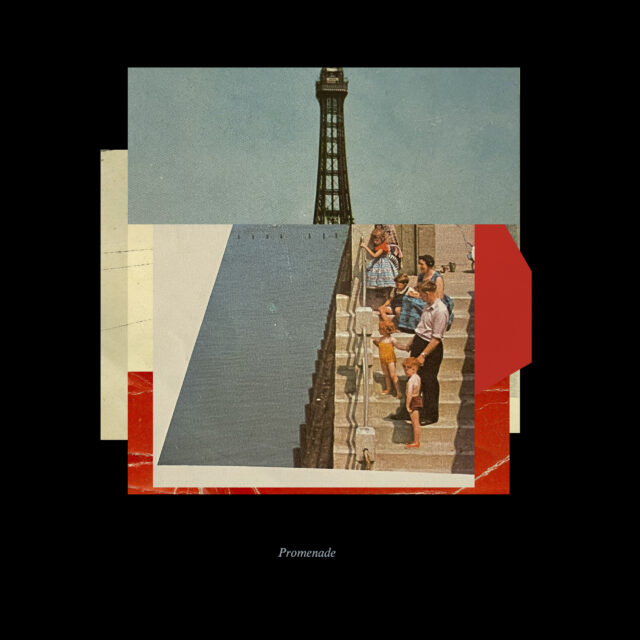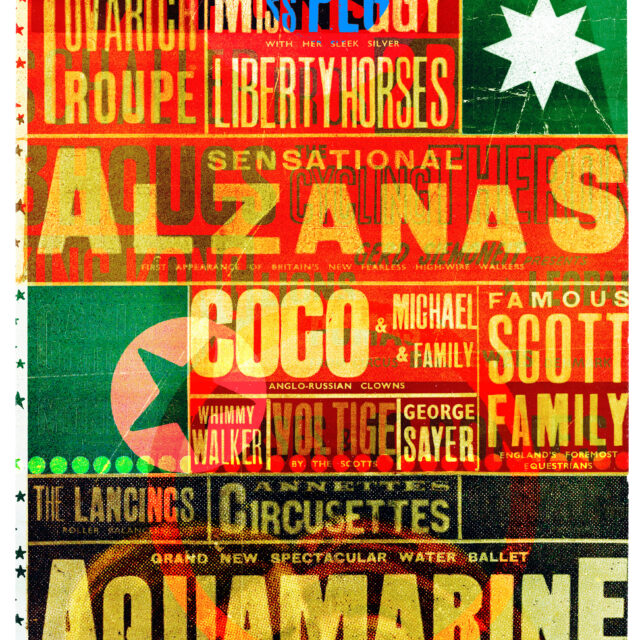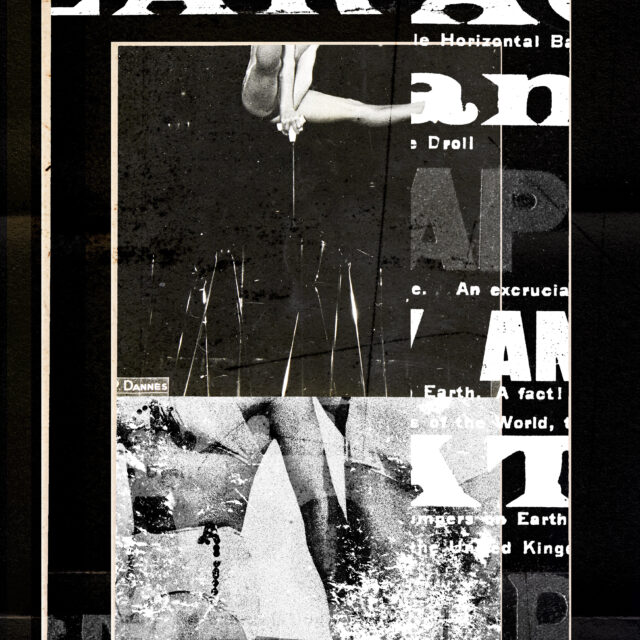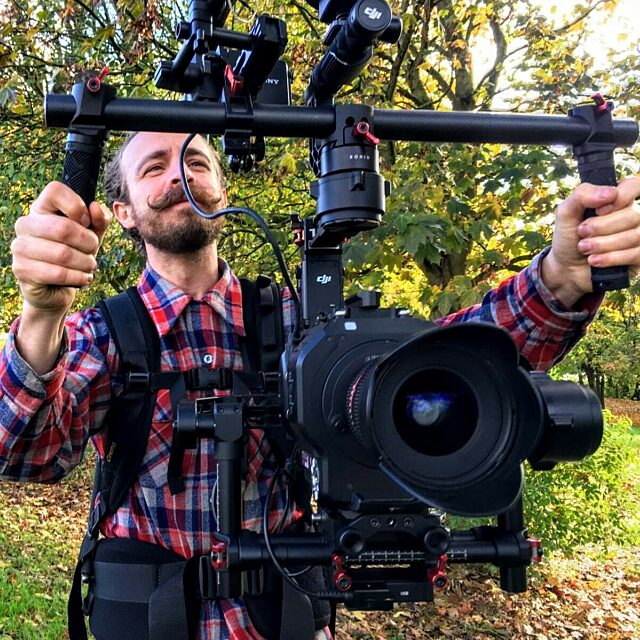Meet Alex Williamson
Alex is a collage based illustrator currently working with Showtown to create a series of large scale artworks that will realise ‘Showtown’ as an immersive, engaging family experience that visually celebrates the social and cultural heritage of Blackpool.
We asked Alex a few questions about his artworks and the methods he uses to create these large scale pieces that will feature in the museum.
Tell us more about the methods you use when creating works of art.
As an illustrator I work with cut-out collage and print techniques. I use a combination of both analogue and digital processes to make artworks that typically combine layers of found photographic imagery with found graphic ephemera, textures and colours.
How do you introduce collage into your work?
Collage, as an art form, is about play and harnessing the unexpected; exploring, observing and documenting the narratives or ideas that emerge, when you combine two or more separate images or elements in the same visual space.
When you place random elements together with an element of the unexpected - perhaps a word and an image, a juggling man next to a fish, a circle combined with a square - something new emerges from the association of these elements. There is harmony or dissonance, visual tension or synergy - and from this meeting point a new narrative or 'idea' emerges. New life is given to old objects, their meaning and relevance changes.
Why did you decide that collage was the art form you wanted to use to represent Blackpool?
As I have researched and found out more about Blackpool past and present, the town is itself, like a collage over time. It is a collision of so many groups of people: holiday makers old and young, punks and magicians, comic fans and ballroom dancers, acrobats and fortune tellers.
The environment itself is a visually rich and often chaotic collage of competing signs, buildings, stories and events.
This cultural heritage is reflected in the Heritage Collections archives - wonderful collections of printed ephemera - old posters, postcards and photography, capturing Blackpool and its people through different eras.
Artistic group, the Situationists, in 1968, had a motto 'sous les paves, la plage' – a loose translation of which is ‘Underneath the rigid order of the paving stones, lies the sand and the chaos of the beach.’
Read in another context this might also articulate the origins of Blackpool and its appeal as a northern English working class resort. Underneath the order or grind of everyday working class life and work, exists the potential 'chaos' of a week’s holiday in Blackpool where people let off steam and where collisions of the unexpected were to be found in the sideshows, entertainments and nightlife.
Tell us more about the processes you went through when delving into the Heritage Collections and how you documented your findings.
The brief involved exploring the Heritage Collection's fabulous archive of photography and visual ephemera with the aim of recreating and re-interpreting Blackpool's rich visual and cultural history for new audiences and setting the scene visually for the museum's stories.
As I worked my way through and explored the archive imagery, I created a parallel series of smaller artworks. These are 'process' sketches or 'out-takes' that function as a free space - a way of playing and trying things out.
These images are documents of an integral part of my visual research process: when something catches my eye in the collection; a sign, a texture, an element of an image, I cut it out of the original source and keep it in a new document as a visual 'note' for possible use down the line.
Each document then functions as a reference 'index' - a collection of ideas and cut outs, sections of images, isolated figures, signs or architectural details all for possible future use but lovely in their own right. As these smaller elements build up and are collected in the visual indexes, the collection is reworked or reassembled, new associations or dialogues occur between images, new patterns and hidden stories emerge from Blackpool's past.
Lastly, tell us a little more about the large scale artworks you have created for Blackpool.
The large scale collages created for Showtown are primarily driven by the curated narrative of the exhibits and I work closely with the Showtown curators and the designers, Casson Mann, on this. However, these larger works are often inspired or informed by the new ‘collisions’ and ideas that occur in the more random process of creating the visual indexes or the sketches you see here.
These index images are both parallel to and a key part of the work made for Showtown. While they translate into the commissioned or applied work they are also part of an ongoing and enjoyable, personal attempt to creatively capture and explore the ‘curated chaos’ of Blackpool - the invention, wit, spirit, culture and history of a unique place with a unique visual and social history.
